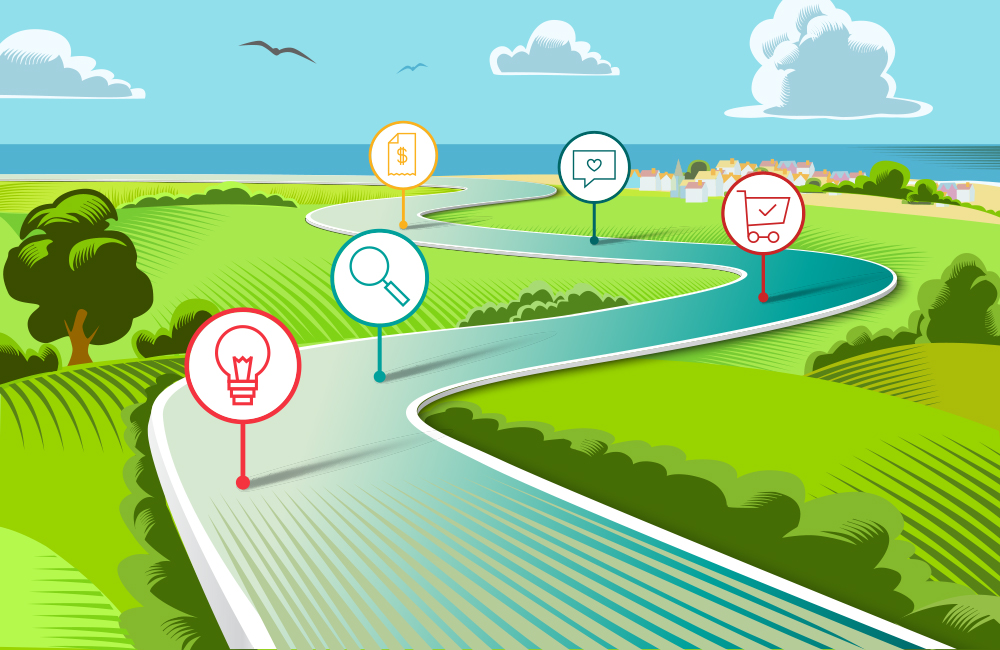Navigating the path to purchase
It is more critical than ever to understand the path to purchase. In a world where word of mouth, ‘virtual’ and otherwise, allows for easy reviews, recommendations and advice based on personal experiences, good and bad, can dramatically impact sales. With increased distribution channels, digital, online and offline shopping options, competitors and distractions, how do marketers most directly target potential shoppers? Rather than using a scattergun approach, mapping the path to purchase can allow precision.
Not all consumers are equal. There is the consumer, who uses the product or service and the shopper who buys the product or service. Their needs are often different.
Take buying a bed as an example:
User needs = good quality, long lasting, comfortable;
Shopper needs = reliable information, ease of purchase, convenient delivery, good price, good store experience and reviews.
In many instances, the user will influence the shopper, or shop together (e.g. parent and children). There is also the lone shopper – likely the one who considers the reviews and recommendations more seriously, takes note of the in-store layout, service, information, price, convenient delivery options and payment options, while the other goes from bed to bed deciding which is the comfiest.
So what is the path to purchase and why is it important to understand? The path has many points, stop signs, green, orange and red lights. Movement through these points along the path can be at a different pace from one to the next, and blockages can be common. They may have different pain points at each stage. Difficulties that make the experience unpleasant, or moments of delight, good experiences that make it easy.
Each of these is a moment of truth, that defines a specific point in the experience where the enterprise has opportunity to impact the experience in a positive or negative way and can have a significant impact on the future of the relationship.
The experience is multidimensional and it is not just about what users and shoppers they say or do, it is about why they do, say, feel and think what they do, so we can empathise with them and transform that human understanding into new products and services.
To fully understand the path to purchase, let’s go back to marketing 101 for a moment. The brand conversion funnel that defines the stages of …
- awareness,
- consideration,
- preference,
- purchase,
- retention,
- and advocacy.
What influences the shopper at each of these stages?
- No doubt advertising and other promotion influences awareness.
- Reviews and recommendations as well as product information, price, perceived quality will influence consideration and preference.
- What moves the shopper from consideration to preference and then purchase? What are the attributes that have the most impact on a purchase decision?
- What are the experiences through the purchase, especially of big items such as a home where cost and time invested is far greater than small purchases such as a chocolate bar, that builds satisfaction and thus drives retention and advocacy?
What role does research play?
Research helps define the business objectives:
- What are the critical elements of satisfaction through the path to purchase and subsequent experience journey according to customers?
- What are the critical elements of customer satisfaction according to employees?
- Where should the focus lie for the business to improve?
Who is the target audienceand how do their paths differ? Why do they stop at certain points?
For example customers who currently or have recently purchased. Or, lost customers who have previously purchased and have since changed brands or providers. Those who have made commitment to a point and then decided “thanks, but no thanks”. Or, lost leads who have had interaction, but do not have enough desire to move to the next stage.
Research also helps to understand the customer and the ….
- Experiences that may lead to an undesirable outcome (pain points);
- Experiences that are hidden or invisible to the organisation (sometimes out of their control);
- Moments of delight / truth having signification impact on future interaction;
- Experiences and moments recognised by employees that they feel had a significant impact (positive or negative) on the customer relationship;
- Gaps that exist between the customer’s expectation and the client performance; and
- Opportunities for improvement are suggestions for closing the expectation gap.

Interactions with the brand, staff or others throughout the path will have different weights applied. For some brands, awareness might be high thus driving improved interest and a focus on lead nurturing, and with this sales rep training might be required to maximise the conversion.
Alternatively, online discussions, ad clicks, organic searches and online review searches might be far greater and with this there is opportunity to provide education through these sources to promote the point of difference and advantages, such as blogs, easy to access product information, live chats et cetera to encourage those purchases.
The path to purchase and experience ultimately drives customer satisfaction. Satisfied customers will (hopefully) be advocates and repeat purchasers – if triggers allow this.
To establish the critical elements of customer satisfaction, it is important to look beyond basic customer satisfaction measures towards a more holistic customer experience journey, the pain points, moments of delight and those moments of truth that will influence shoppers along the path, and to identify and prioritise the specific areas that drive customer retention and advocacy and ultimately sales, and repeat sales.




